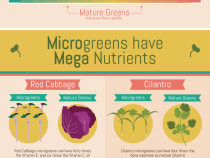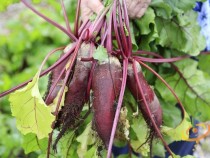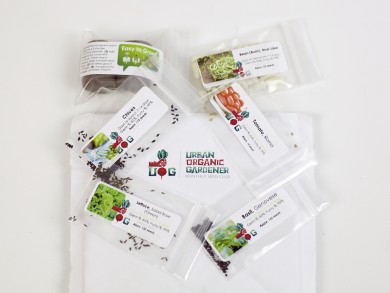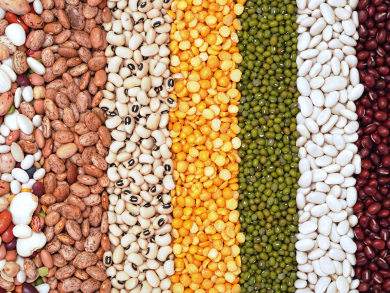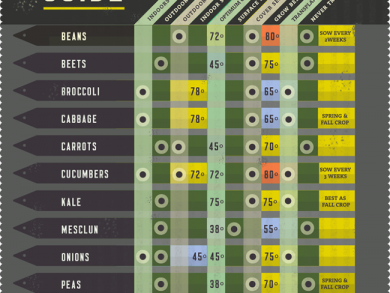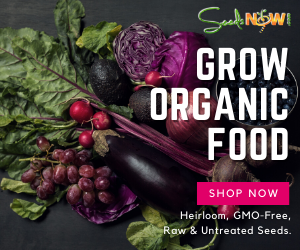You Are Browsing ‘Seeds’ Category
Just a REMINDER: If you want to receive a shipment for the month of September, you must sign up before Sept. 4th, at 11:59pm PST. Calling all Urban Organic Gardeners! Did you know that RIGHT NOW is the perfect time to start planning your Fall/Winter urban gardens? Join the Urban Organic Gardener’s UOG Monthly Garden & Seed Club – Sign up now at: https://urbanorganicgardener.cratejoy.com Our...
Having a thriving vegetable garden doesn’t have to end when summer does. With a little bit of planning, and preparation you can grow vegetables well into the winter months or even year round if you live in a warmer climate down south. But regardless of where you live, there’s a few crops you can count on to withstand cooler temps, frost, and even sometimes...
JOIN the Urban Organic Gardener’s MONTHLY SEED CLUB TODAY! For $10/month our garden experts will build a custom curated collection of seeds & garden supplies designed around YOU – your grow zone – your garden space/location – and your preferences. Sign up now at: https://urbanorganicgardener.cratejoy.com The weather in August is oftentimes...
Don’t wait, join the new Urban Organic Gardener’s Monthly Seed Club now! MUST JOIN BEFORE JULY 4th at 11:59pm PST to receive the next shipment. Sign up now at: https://urbanorganicgardener.cratejoy.com For $10/month our garden experts will build a custom curated collection of seeds & garden supplies designed around you – your grow zone –...
Don’t wait, join the new Urban Organic Gardener’s Monthly Seed Club now! Must join before July 4th at 11:59pm PST to receive the next shipment. Sign up now at: https://urbanorganicgardener.cratejoy.com For $10/month our garden experts will build a custom curated collection of seeds & garden supplies designed around you – your grow zone –...
What’s Included? 5 New & Unique Varieties Every Month ✚ Expanding Seed Starting Soil Pods (just add water) ✚ Grow Guides ✚ Detailed Planting & Spacing Instructions ✚ Bonus Items & Special Offers We will curate the absolute best seeds known to grow for your exact garden location, preferences, grow zone, and time of the year. WHAT...
If you want to get a jump start on your gardening outside, but temperatures are still quite cool, you can use milk jugs to create mini-greenhouses. “Three cold-treatment methods that work include: 1) Plant in recycled containers that are monitored outside; 2) Pre-chill the seeds in the refrigerator; and, 3) directly sow the seeds on prepared beds that are either...
Join the club that delivers you garden seeds at just the right time of the year to plant them – hand selected based on your garden specs. Every month you’ll receive a collection of heritage garden seeds and everything you’ll need to get growing. Buy a subscription for yourself or give one as a gift! Sign up here: https://urbanorganicgardener.cratejoy.com/ How...
Become a Urban Organic Gardener! Here at UOG we believe that growing your own organic food can be one of the most rewarding things you can do for your mind, body, and soul. Become a member of the UOG Monthly Seed Club and receive a handpicked collection of seeds and garden goodies specifically catered to your exact growing requirements. Whether you’re growing in containers on your patio...
Gardening isn’t usually a process that should be rushed. It takes time to prepare a spot that you’ll be planting in, and patience usually pays off when you’re growing your own food. There are a few crops, however, that always mature fairly quick. If you’re short on time during your growing season or just want to get your toes wet as a first time gardener, we’ve put together a list of a few crops that are quick to grow and will have you harvesting your own homegrown veggies in no time at all.
1. Lettuce
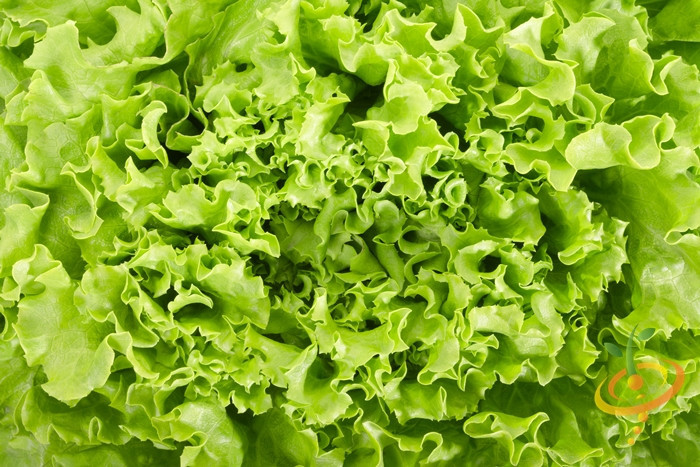 Learn how to grow your own organic Lettuce >
Learn how to grow your own organic Lettuce >
Lettuce – (Harvest in about 30 days) Lettuce is a wonderful crop to grow, and matures fairly quickly. Sow new lettuce seeds every 30 days for a continuous harvest that will provide you with fresh leafy greens year-round. Lettuce prefers cooler temps, somewhere around 50-60 degrees but will also thrive during the summer if grown in the cool shade. Have a sunny window? It grows wonderful indoors as well. Short on space? Lettuce loves being grown in containers and usually doesn’t mind being crowded when planted so you can sow your seeds fairly close together as long as you’re not sowing varieties that produce a round head.
2. Radish
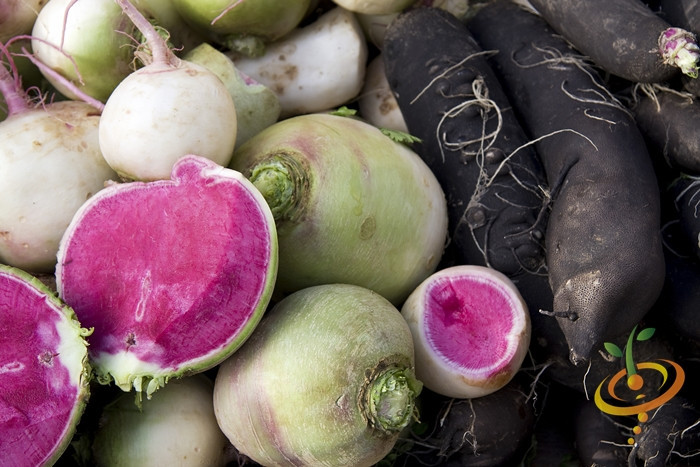 Learn how to grow your own organic Radish >
Learn how to grow your own organic Radish >
Radishes – (Harvest in about 20-25 days) Want a fast growing crop that packs a ton of flavor? Radishes take up very little gardening space, grow very quickly, and can come in over 200 varieties with a wide array of colors, shapes, sizes and flavors. They grow well in containers, and prefer full sun however some varieties can be grown in partial shade. In cooler climates they can be planted in both the spring and fall. In warmer climates they should be grown over winter.
3. Spinach
 Learn how to grow your own organic Spinach >
Learn how to grow your own organic Spinach >
Spinach – (Harvest in about 30-45 days) Baby spinach leaves can be harvested about a month after planting. The smaller leaves are loaded with flavor, regardless of the variety you choose. Harvest the larger leaves at the base and allow the plant to continue growing and you’ll be able to harvest from a plant for quite a few weeks before it goes to seed. It grows a lot like lettuce, so try and grow it in cooler temps. or in the shade during the summer. Also grows well in containers and doesn’t require a lot of space in the garden.
4. Bush Beans
 Learn how to grow your own organic Beans >
Learn how to grow your own organic Beans >
Bush Beans– (Harvest in about 50 days) Beans love warmer temps. and seeds can be sown every two weeks during the summer to ensure a continuous harvest. Bush beans usually produce most of their beans within a 2 week period.
5. Peas
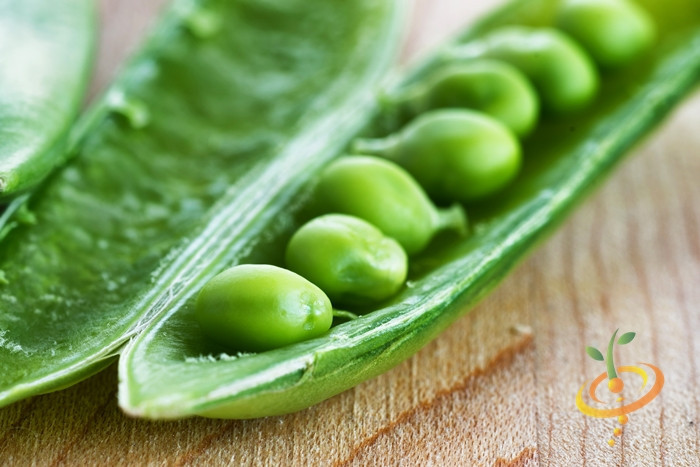 Learn how to grow your own organic Peas >
Learn how to grow your own organic Peas >
Peas- (Harvest in about 60 days) Peas are a wonderful cool season crop that take up virtually no space since they grow vertically on a trellis. They do best when directly sowed. The simplest way to prolong harvest is to plant early, mid season, and late varieties at one time rather than sowing every 2 weeks.
Source: NaturallyLoriel.com Naturally Loriel recently published a blog post on a very important topic: How to Source Non-GMO Seeds. She says, “You begin to learn which food companies deserve your support and try to find a local farmer’s market in your area. You realize it’s so important to meet and shake the hands of the farmer that produces your food. Unfortunately though, you’re not...
The strangest posts wind up causing some controversy. It doesn’t make sense to me. When I wrote about why having an emergency seed bank is important, I didn’t quite get the reaction that I’d expect. I received emails, Facebook comments and Tweets saying that I couldn’t be more wrong about storing the seeds and that freezing them was a horrible idea. I’ll admit that I have...
Seed starting. Who thought that it could be so intimidating… ..but there are lots of questions and things to take into consideration when starting your seeds. We’ve already covered some basic seed starting tips and tips for those of you starting indoors, but I want to make it even more simple and basic. Because that’s how I do. One-liners to help you start your seeds On the Urban Organic Gardener Facebook page, I’ve been sharing gardening tips. They’ve been pretty popular, mostly because I think they are...
What’s the difference between an heirloom and hybrid tomato? Are open-pollinated seeds good or bad? These are all questions that you have asked me. You already have reputable sources to buy your seeds. Here’s a simple explanation of the different types of seeds. Here’s a simple explanation of the different types of seeds. — Tweet This Different...
We’ve talked about indoor seed starting and it’s advantages. While it may be advantageous to start some seeds indoors, it’s not wise to do so with all seeds. The general rule of thumb is if it grows underground, plant it directly. Stick with that and you should be good. Save yourself the hassle and plant these seeds directly in your containers. Save yourself the hassle and plant these seeds directly in your containers. — Tweet This Beans Beets Carrots Dill Garlic Onions Peas Radishes [vimeo clip_id=”39030373″...
You want to start your seeds… …but you aren’t into the diy seed starting projects. It’s all good and I understand. If you want to buy a seed starting tray, but not sure what to look for, then read this. I want to help you to get a quality seed starting tray and provide you with the information that will help you to buy one. If you want to buy a seed starting tray, but not sure what to look for, then read this. — Tweet This. 5 things to look for in a quality seed tray Good Drainage Make sure your seedling...
By Michelle Moore Owner of The Greenhouse Catalog There is nothing like new life in spring… …and starting seeds is one of the best ways to enjoy the start of the season. Unlike transplants, seedlings are fragile and require newborn-like attention: The right media, temperature, light, water and food. To a new gardener, meeting these needs may seem like a challenge. But with a little knowledge and the right equipment, success is easy and just a few short days or weeks away. With a little knowledge and the right equipment,...
You’ve scouted out the location for your garden… Figured out how much sunlight your space gets… And have decided what you are going to grow. Now it’s time to finally get your seeds started and aren’t sure what to use. That’s why, I wanted to share 5 items that you can start your seeds in. Strawberry containers. If you are growing...



